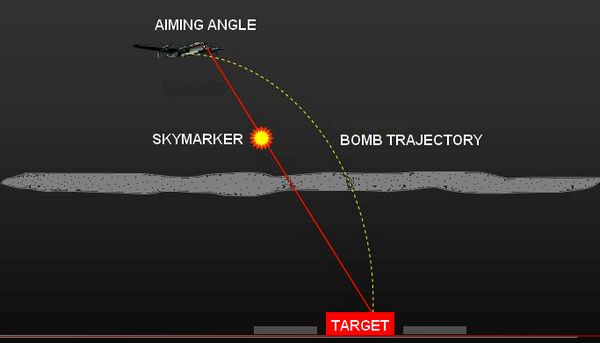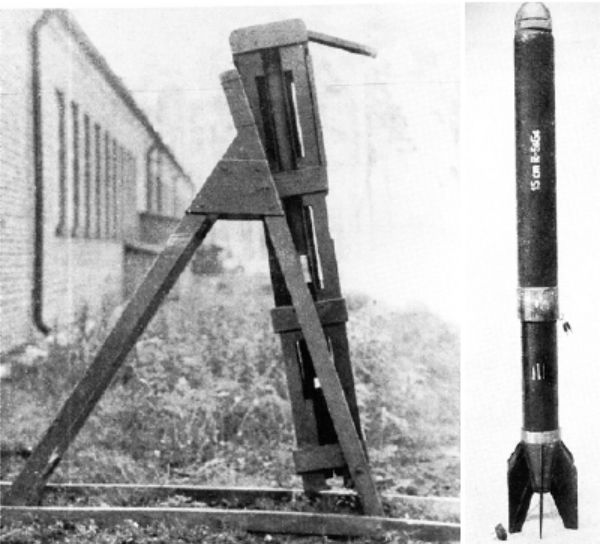Tactics - Technologies and Countermeasures
The “Butt Report”, published in August 1941, reported that only a small percentage of aircraft were dropping their bombs within 8km of the target........over the heavily defended Ruhr in poor weather this proportion was only 10%.
The effective Germany decoy measures played no small part in these embarrassing results.
If Big Ben was the target then only 10% of the RAF's bombs would fall within the red circle
In August 1942 the RAF formed the Pathfinders - more experienced crews who were relied upon to bomb accurately.
Early results were not good with up to 75% of bombs not even dropped over the correct city.
However, with priority access to new navigational equipment, accuracy improved.
Initially the Pathfinder Force carried no special target indicators but by January 1943 they used specially adapted 250lb bomb casings containing sixty coloured pyrotechnic candles (red, green, yellow).
At a predetermined height the casing would explode and release the burning coloured candles which would fall to the ground. These would burn on the ground for about three minutes providing a coloured “aiming point” for the main bomber stream. 
The four Target Indicators are circled and a rare ground view of these burning candles falling to the ground
The Germans christened them "Christmas Trees" because of the coloured pattern they made
When the Pathfinders could visually identify the target then this method of marking was codenamed 'NEWHAVEN'.
If the target was obscured by a thin layer of cloud then target identification would be made using H2S or Oboe.
Ground markers were still used as their glow would be visible through thin cloud.
This method was codenamed 'PARRAMATTA' or 'MUSICAL PARRAMATTA' if Oboe was used.
Skymarking was used in the case of thick cloud where the target indicators would not be visible to the following bombers.
The Skymarker was an intensely bright flare suspended under a parachute and the technique was codenamed 'WANGANUI' or 'MUSICAL WANGANUI' if Oboe was used.
The WANGANUI' or 'MUSICAL WANGANUI' technique using a flare suspended from a parachute
The Germans quickly learned how to imitate Target Indicators (both falling and burning on the ground) and also learned how to copy the combination of colours used by the Pathfinders.
Skymarkers were a little more difficult to copy but they developed Scheinsignalrakete (literally, false signal rocket).
These would be fired from 'upstream' of the target and encourage 'creep-back'.
The simple but effective 'launch pad' for the Scheinsignalrakete
In turn, the RAF tried to develop flares of a unique colour that would be difficult for the Germans to copy.
However, a major factor in improving target marking was the use of a Master Bomber who would remain in the target area and give a running commentary on which markers to use and which to ignore.
German decoys methods were a continuing problem for the RAF until close to the end of the war.
Such passive defences could not stem the tide of of destruction but they played an important part in protecting German industry and urban areas.